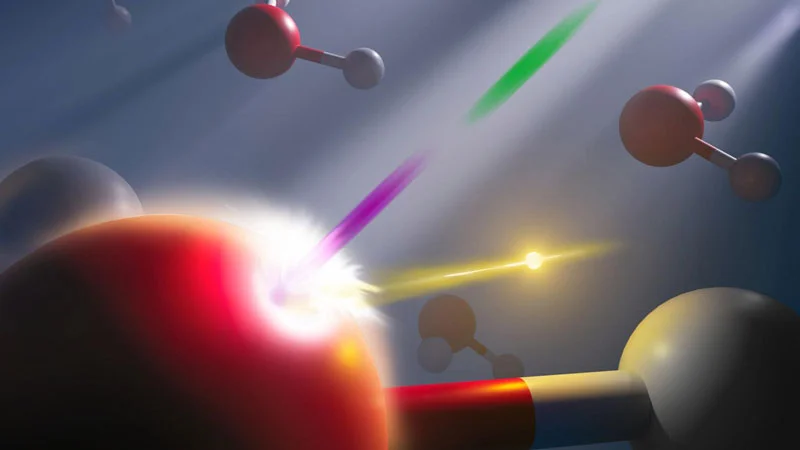American scientists have cracked a window into a new field of experimental physics. They were able to obtain an energy image of the movement of the electron around the hydrogen atom in the water droplet, even before the atom started moving. Until now, scientists did not have the tools to delve into such detailed processes in matter; This will reveal more details about the physics and chemistry of many processes and, in particular, the effect of radiation on living cells.
In an experiment that vaguely resembled a time-lapse video, scientists isolated the energetic motion of an electron while also “freezing” the motion of a much larger atom around which the target electron orbited in a sample of ordinary liquid water. The scientists reported their work in an article in the journal Science. The study was mainly aimed at studying high-energy radiation on living cells, which is needed in space, radiotherapy of tumors and more.
“The radiation-induced chemical reactions we want to study are the result of the target’s electronic response occurring on the attosecond time scale.” – explained Linda Young, senior author of the article and a distinguished researcher at Argonne National Laboratory. — Until now, radiochemists could only detect events on the picosecond time scale, which is a million times slower than attoseconds. This is like saying “I was born, then I died.” Want to know what happens in between? That’s what we can do now.”
To reach the conclusion, an interdisciplinary team of scientists from various national laboratories of the U.S. Department of Energy, as well as universities in the United States and Germany, combined experiments and theory to reveal the effects of ionizing radiation from the X-ray in real time. Source on the subject. The research was supported by the Center for Frontier Energy Research on Interfacial Dynamics in Radioactive Media and Materials (IDREAM) with funding from the U.S. Department of Energy’s Pacific Northwest National Laboratory (PNNL).
It is no secret that subatomic particles such as electrons move so fast that a sensor that can measure time in attoseconds is needed to record their actions. It is so fast (or small) that each second, for example, has more attoseconds than seconds in the entire history of the universe.
The research carried out by the authors is based on the discovery and creation of attosecond X-ray lasers on free electrons; The Nobel Prize in Physics was awarded specifically for these lasers last year. SLAC National Accelerator Laboratory has one such light source (LCLS) that experimentalists use.
Ordinary liquid water was chosen as the test sample for the experiment. The first attosecond pulse excited the electrons and the second measured the response. This allowed the sensors to respond so quickly that the excited state of the electron manifested itself even before the central hydrogen atom in the molecule started moving. Previously, in the process of such observation with the help of pulses of longer duration, the picture was so blurred that scientists assumed the existence of a number of intermediate states. The attosecond laser showed that intermediate states do not exist; These are all mirages or attempts.
“We now have a tool where you can, in principle, follow the movement of electrons and see new ionized molecules in real time as they form.” summarized the authors of the study.













